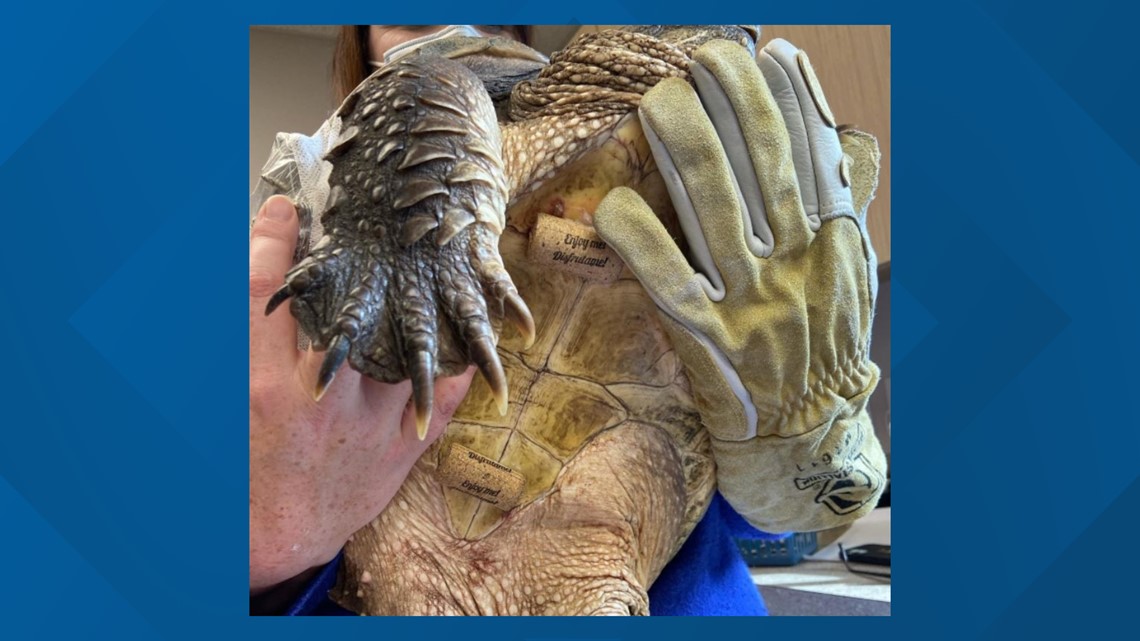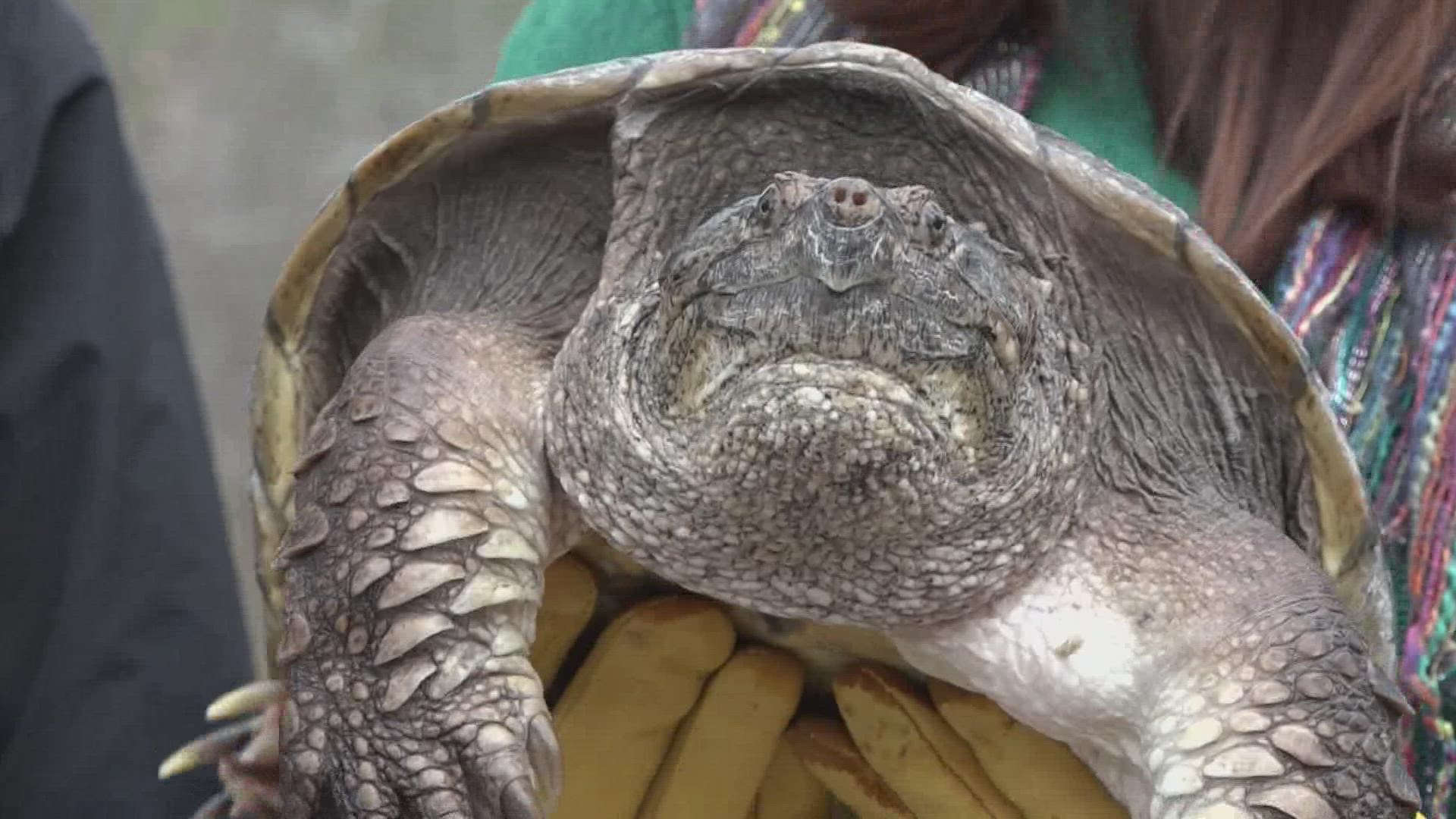ELIOT, Maine — Amanda and Lila Ouellette, mother and daughter, had seen the big, old snapping turtle before.
“We rescued him probably a few days or a week or so prior. We saw him on this road coming out of a bushy area near my home, so we ended up forcing him to go that direction towards the pond behind us,” Amanda recalled.
He was a familiar sight around their neighborhood. But when they found him on a warm afternoon last September, it was a very different story. His shell was missing on both the top and the bottom.
With some help, they managed to get him into a box and take him to the Center for Wildlife in Cape Neddick.
The Center for Wildlife treats close to 200 different species of animals that become injured or orphaned in the wild. Nearly eight months ago, the arrival of this snapping turtle challenged their abilities — and captured their hearts in a way they could not have imagined.
Kristen Lamb, the center's executive director, remembers it this way: “A woman and her daughter that live in the neighborhood that he lives in found him on the side of the road. And he had not just been hit by a car but fully run over by a vehicle.”
His prognosis was not good. Turtles have a top shell and a bridge that connects down to their bottom shell. An entire side of this turtle's shell had cracked open, revealing his body cavity.
“He was even missing parts of his shell and skin from the trauma,” Kristen remembered.
You can estimate the age of a turtle by its size and by the scutes on their shell — like growth rings on a tree. The team guessed he was about 40 years old.
It was important that they began to repair the shell because, if left unattended, the bone can die and never heal. They treated him for trauma and blood loss and applied some heat for shock, fluids for hydration, and antibiotics. The team used various creative approaches to try to seal off the body cavity.
“We were packing the wound. We ended up using collagen strips, manuka honey; we even used beeswax and silver sulfadiazide — all sorts of things to pack the wound and try to help seal off the body cavity to stop blood loss. But you also can’t just repair the wound too quick because if we just sealed it right away, we would trap in bacteria and infection,” said Kristen.
After he was stabilized, on day four, he had surgery, and it was days before he fully recovered from the anesthesia. The staff moved his legs to keep his blood pumping.
It was the beginning of a very long healing process for the snapping turtle. Kristen and her team had already grown fond of the reptile.
"[We] really pulled out all the stops for this guy," Kristen said. "He just really drew us all in because he’s just a special, ancient individual.”
A turtle’s shell is made out of bone, and the team pulled it together with brackets and bandages.
“Turtles are incredible at regenerating tissue and healing from wounds,” Kristen remarked.
He couldn’t go into the water until his body cavity had sealed. Keeping him hydrated was a task. He was immobile, so the team had to protect him from getting what we think of as bedsores.


"Our team put cork lining on the bottom of his plastron to actually keep his own body pressure off, which prevented sores from happening,” Kristen said with a bit of a smile.
All the while, his progress was documented on Facebook, where he had millions of hits on a video of him drinking water. The old turtle had become a bit of a celebrity.
Two hundred twenty days later, it was time to release him to a quiet pond they thought was his summer home. Bringing him there a bit early in the season means he’ll have to cross that busy road one less time.
At the pond's edge, he seemed to understand it was time to return to the familiarity of his old life.
And just like that, he slipped beneath the surface to the mud and the muck — the safe haven of home.
Kristen is proud of her team's work to help this turtle heal and return to the wild.
“To think of him basking in the sunlight and re-growing all that algae and basically a tiny eco-system that he came in with on his shell and eating wild foods and getting all the nutrients and minerals that he needs in the wild? That feels pretty awesome,” she said.
Most of the turtles you might encounter in the wild can fully pull themselves into their shell if they feel threatened. That is how they protect themselves from predators (or humans). Snapping turtles are unable to do that, so their only defense is to snap or bite at their predators. If you encounter any turtle on a road, you can help it on its way in the same direction that it was traveling. If you encounter a snapping turtle, you can use a blanket, towel, or sweatshirt to guide it by either nudging it from behind or getting the turtle on the blanket and dragging it to the side of the road.
To learn more about the Center for Wildlife's work, click here.

